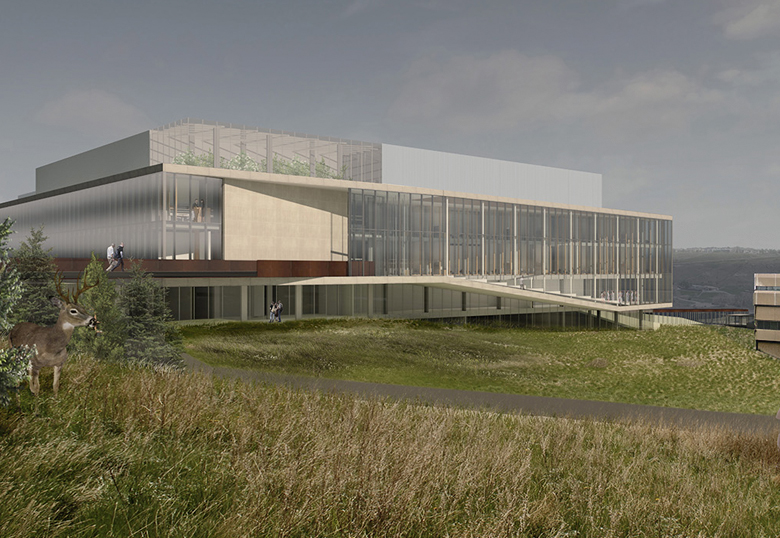The University of Lethbridge Board of Governors recently approved the schematic design for the Destination Project, clearing the way for the transformational project to progress to its next stage – design development.

In October 2014, the Board approved a design concept (The Hub), allowing for the Destination Project to advance to the schematic design phase. Since that time, more than 60 stakeholders, involving more than 200 hours of input, have been involved in developing the building floor plate and integrating the research and teaching needs for all the major program areas.
The Project Steering Committee was guided by a transdisciplinary research theme, and through the concept of developing large, shared research labs, the project continues to take shape.
“This is so much more than determining the layout of an office or what wall goes where, this is our opportunity to shape the way we teach and conduct research at the University of Lethbridge for the next 50 years,” says Provost and Vice-President (Academic) Dr. Andy Hakin. “That is why we have devoted so much time and effort in the consultation process, trying to get as much input as we can from our stakeholders as we contemplate how best to deliver post-secondary education in the future.”
An interactive, life-size mock-up of a teaching and lab area was constructed with the help of the Faculty of Fine Arts, transforming the University Hall Atrium into a space that is reflective of the vision of the project. For the past month, the University community has been able to tour the mock-up and offer feedback.
“This was an outstanding exercise because the 21st century labs that we are developing are so radically different than what our faculty members are used to, it was important for them to see it in a full-scale form so that they could get a feel for what was being proposed,” says Brian Sullivan, director of the Destination Project Office. “It was also very valuable for us in terms of the feedback we received, giving us insight into the finer details that will help us to best meet the needs of our faculty.”
The next four months will see a room-by-room analysis of every individual space in the new building – the Design Development phase.
